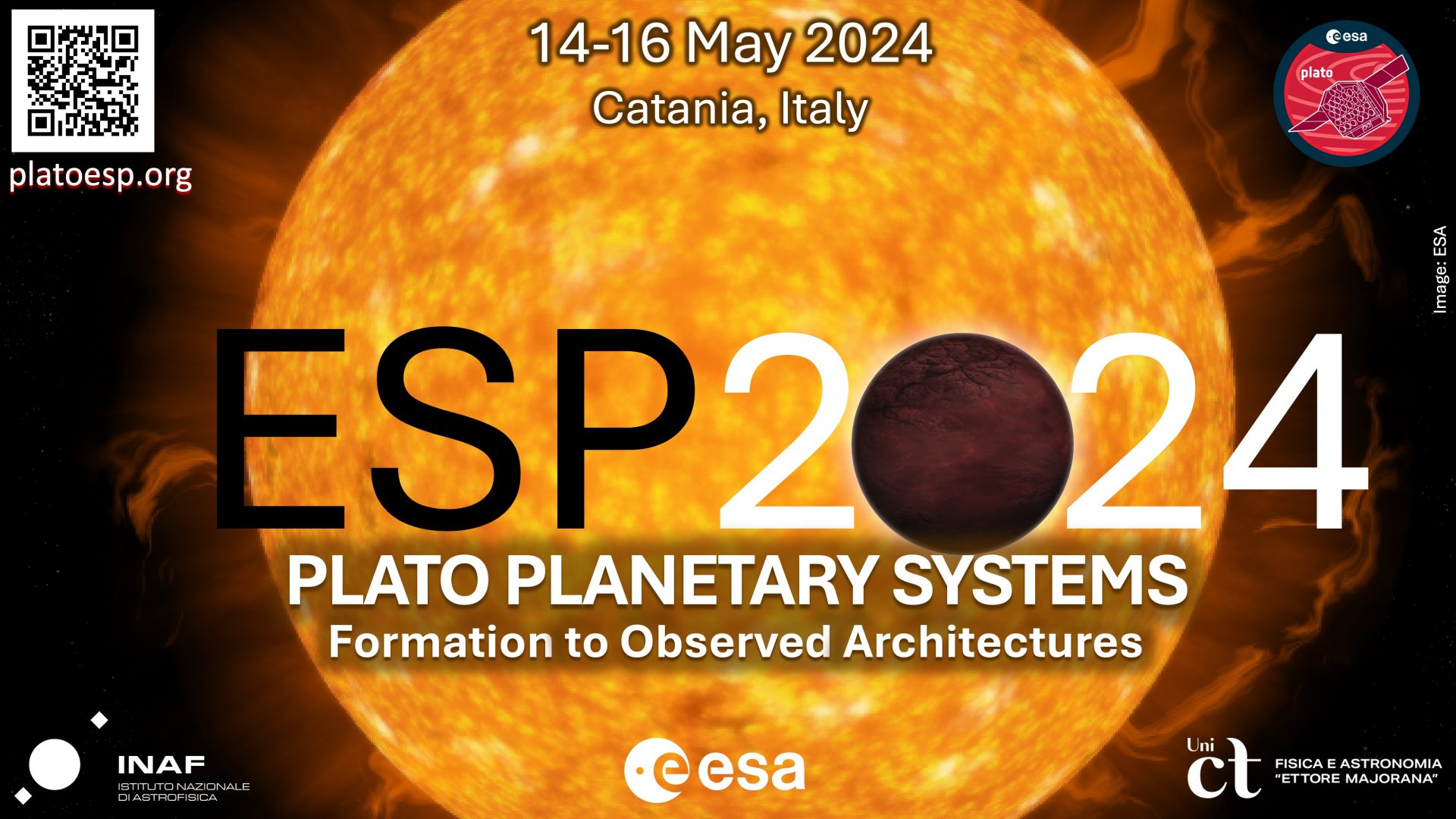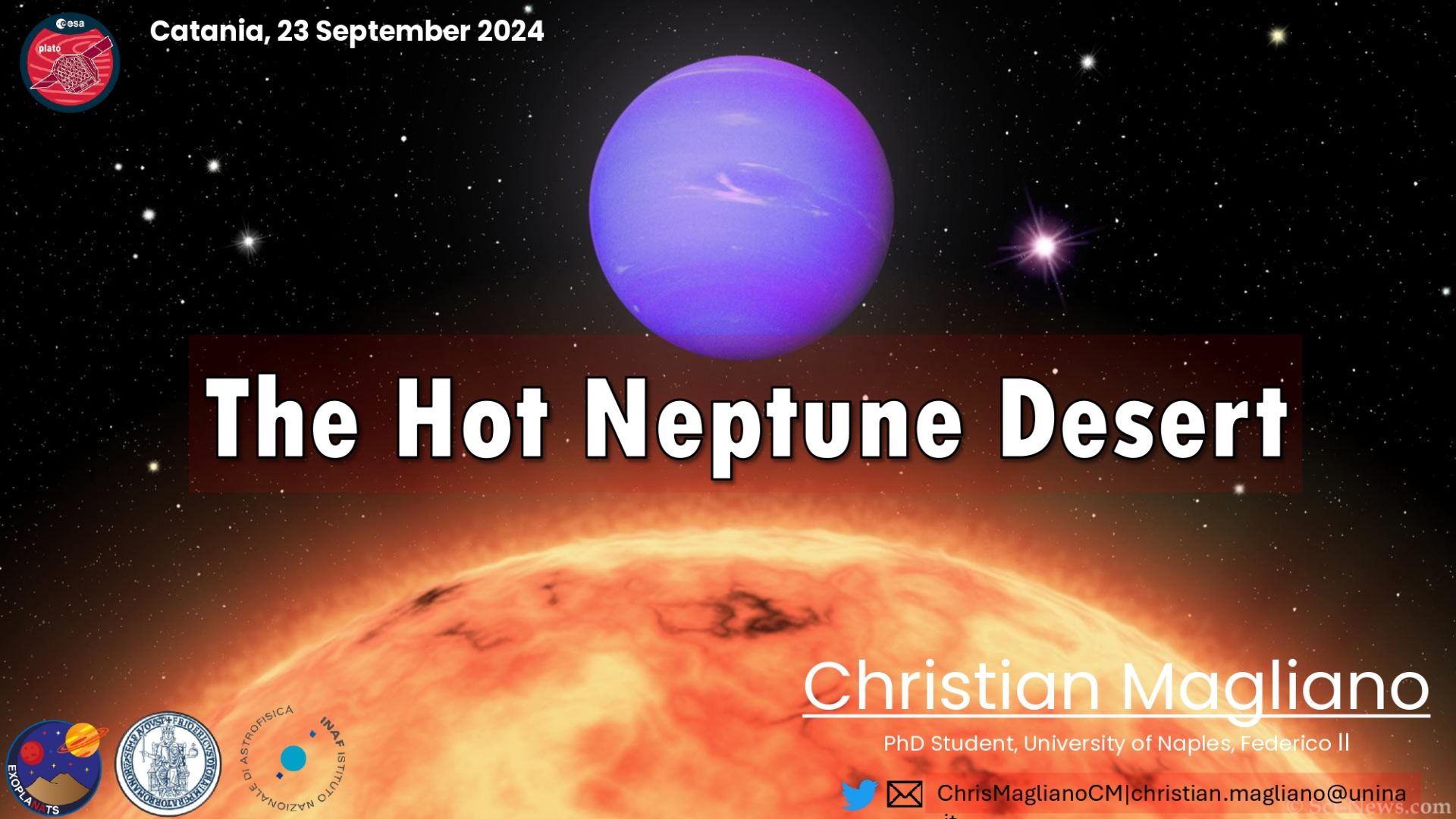ESP2024 – PLATO PLANETARY SYSTEMS: Formation to Observed architectures
Department of Physics and Astronomy "Ettore Majorana" (DFA) of the Catania University Via Santa Sofia 64, Catania, ItaliaPLATO is the 3rd mission of class M in the ESA Cosmic Vision program. Its main goal is detecting terrestrial planets in the habitable zone of solar type stars. With its huge FOV, most of the PLATO targets are bright stars that will be monitored with high cadence (25 s) for at least 2-3 years during the long duration observing program, while contemporary a number of very bright stars in the sample will be observed with 2.5 s cadence. The collected data, photometry from space and high resolution spectroscopy from the ground, will provide accurate planetary structures as well as architectures and evolutionary stage - via asteroseismic analysis - of a large number of planetary systems. PLATO is planned for a launch in Dec 2026.

